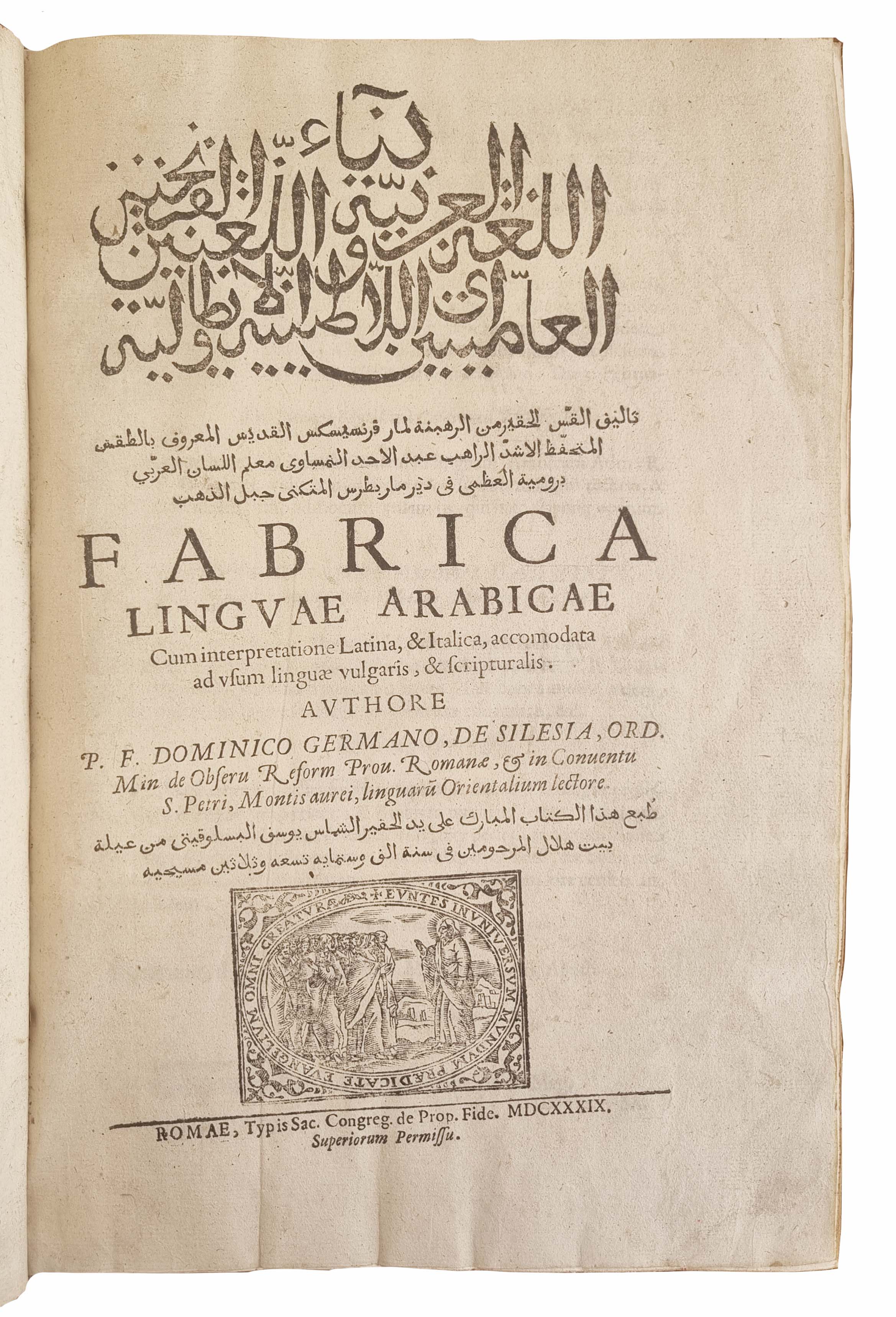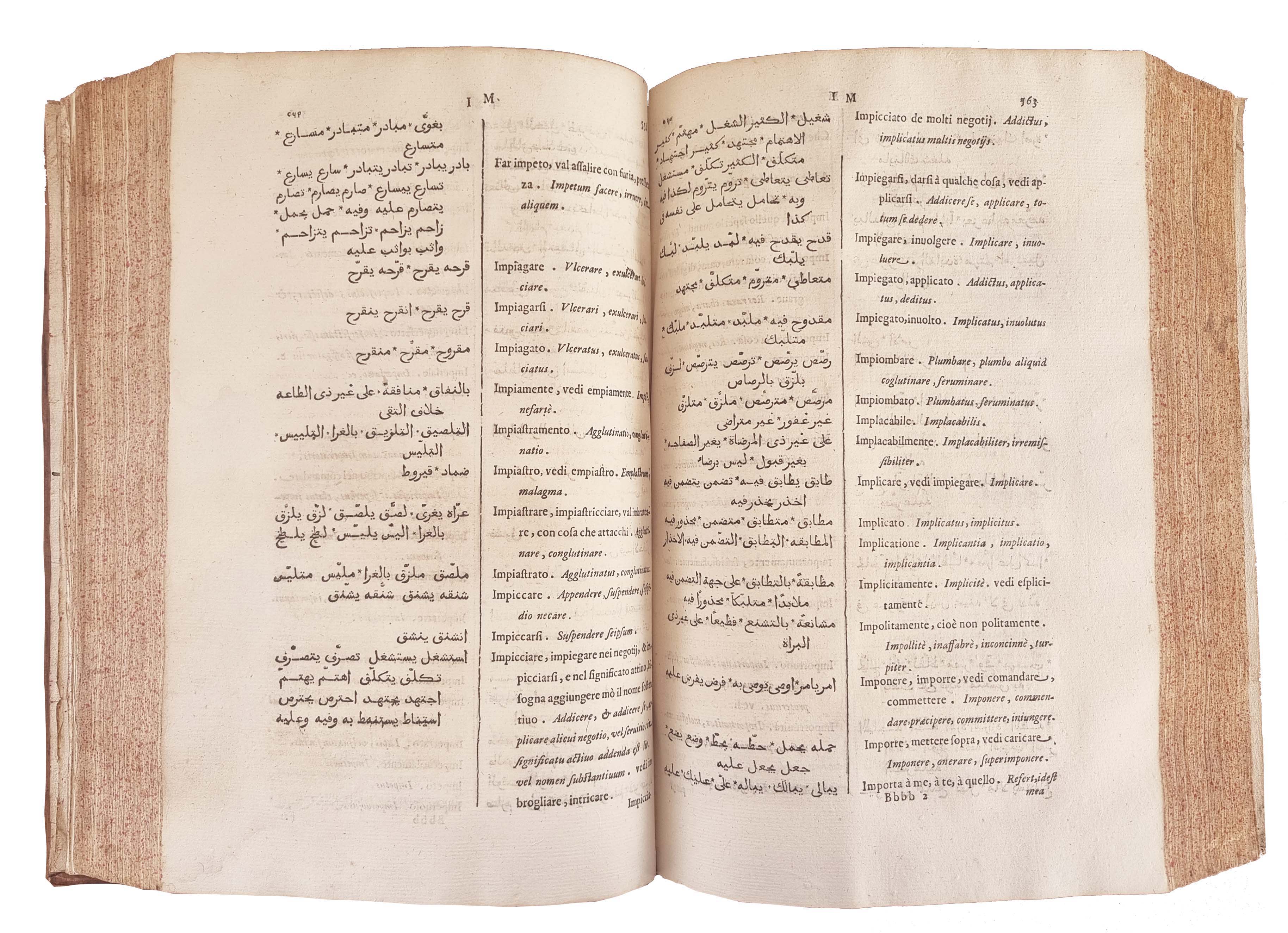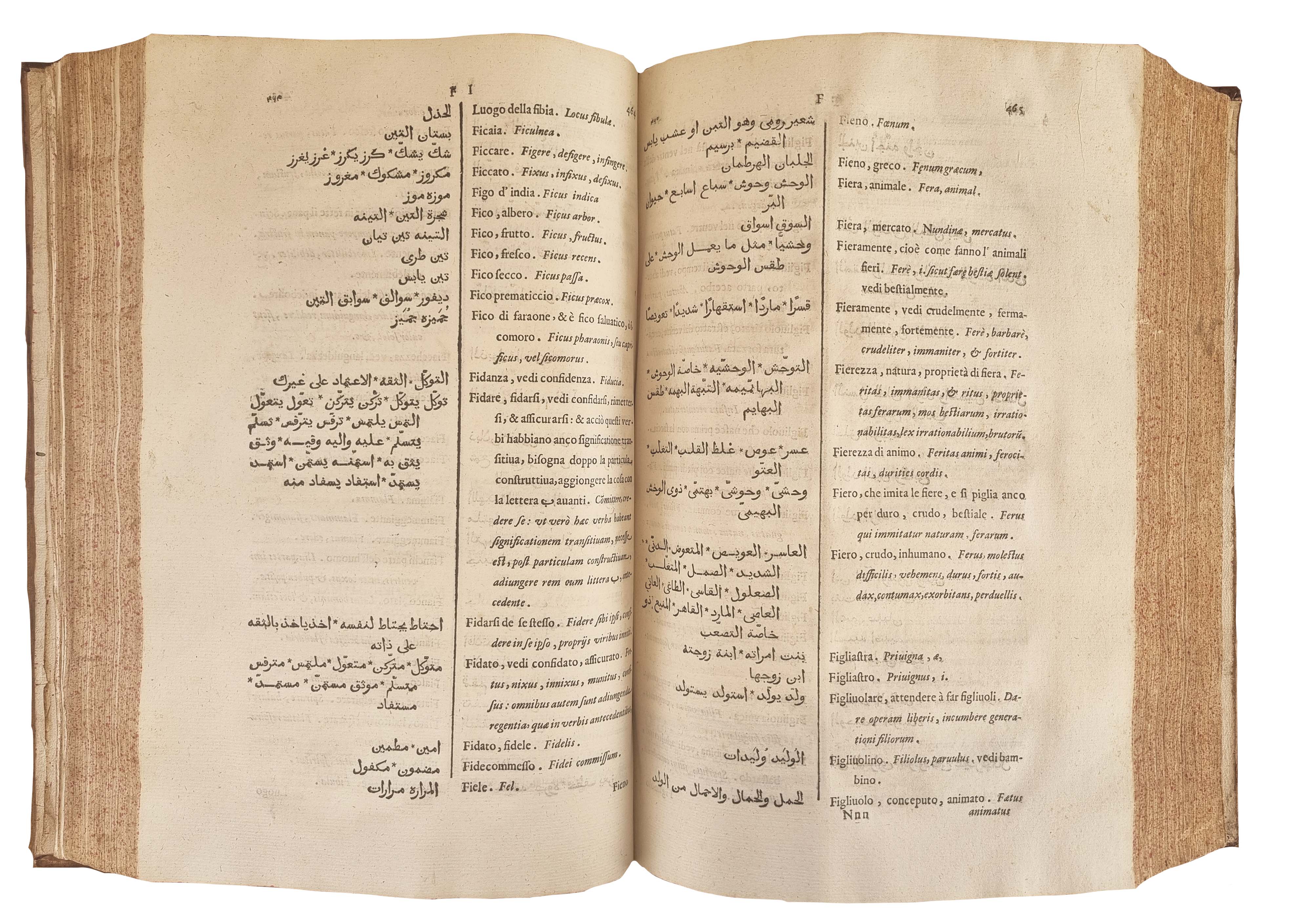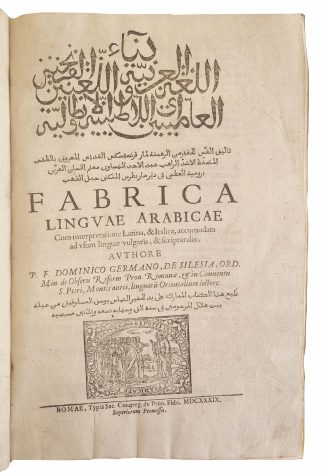GERMANUS, Domenicus, et al.
COLLOQUIAL AND CLASSICAL ARABIC
Binā[᾽] al-lughah al-[᾽]arabiyyah. [...] Fabrica Linguae Arabicae.
Rome, Typis Sac. Congreg. de Propaganda Fide, 1639£7,500.00
FIRST EDITION. Folio. pp. [36], 1082 [=1092], [120]. Arabic, Roman and Italic letter, double column. Woodcut vignette and calligraphic title in Arabic to t-p, small woodcut table of verbal suffixes to c2, full-page genealogical tree of verbal patterns to c3, decorated initials and ornaments. Light age yellowing, tiny worm hole to outer blank margin of first few ll., occasional very minor marginal foxing, thin worm trail to lower blank margin of gatherings 4Q-4V. A very good copy in contemporary polished calf, double blind ruled, raised bands, spine gilt and gilt-lettered, all edges sprinkled red, minor repair at head and foot of spine, corners bumped, a few scratches and stains to boards, early ms price, perhaps binding cost ‘4 ll’ to rear pastedown.
The first edition of this important dictionary of Classical and colloquial (Levantine) Arabic, with Italian and Latin translations, produced and printed by the Congregation of the Propaganda Fide in Rome for the instruction of missionaries to the Middle East. It was intended for European learners of Arabic and Arabic learners (often Maronite Christians) of Latin and Italian, and was widely used in Europe and Palestine until the C19. The Polish Franciscan Domenicus Germanus (1588-1670) was a missionary and teacher of Arabic in Rome, at the Monastery of San Pietro in Montorio. According to the information provided on the t-p of ‘Fabrica’, the Arabic text was produced by the Franciscan monk Abd al-Ahad al-Namsawi, also teacher of Arabic at San Pietro in Montorio. ‘Ever since 1622 the Franciscan convent of San Pietro in Montorio in Rome had been the main centre of the teaching of Arabic under the supervision of the Congregation. […] Teachers at San Pietro in Montorio […] were normally former missionaries who had withdrawn to Rome’ (Girard, p.200). The Arabic text was printed by the Lebanese Maronite Youssef al-Besluqiti (i.e., Joseph David Luna), related to Giacomo Luna, formerly compositor at the Medici Oriental Press. Joseph was also the compositor for Syriac, Chaldean, Georgian, Hebrew and South-East Asian languages, though his ‘colophon’ only seems to appear, exclusively in Arabic, in the Congregation’s Arabic imprints. This is the only instance we have ever seen of a compositor’s name being mentioned on titlepages.
The discussion of colloquial Arabic alongside classical (and Qur’anic) Arabic was linked to the Congregation’s intent to teach ‘the language of theologians’ in Rome and the basics of the vernacular ‘language of communication’ which would later be mastered in the Levant (Girard, p.204). The lemmas in the dictionary cover all kinds of categories, from food to animals, geography (‘Sicilian’ as ‘jazaairyy’), sins (‘pollutione notturno’), everyday verbs (e.g., to sew), ecclesiastical and medical terminology, phrases and invocations, and so on. The initial section provides a compendium of key grammar issues: the construction of words through the addition of prefixes and suffixes phonetic assimilation of specific letters in verbal constructions; the more frequent use of active verbs accompanied by particles, or of the ‘mediopassive’ Type VII pattern, instead of actual passive verbs, etc. A woodcut table summarises the suffixes for the present, past and imperative forms, as well as all the particles (incl. negative) which can be used with each. A full-page genealogical tree illustrates the 10 Arabic verbal patterns (awzaan), in their past, present and masdar (verbal noun) forms. A table of the alphabet lists the pronunciation of each Arabic letter, alone and in combination with others, and was influenced by the Lebanese origin of Germanus’ collaborator. An Arabic section summarises instead the rules of Latin pronunciation and letters (al-faranjyya, the Persian for ‘Frankish’, i.e., Western European) in relation to Arabic phonetics. At rear are two detailed indexes, the Arabic one being organised by basic tri- or quadri-literal roots. A most important work.
NYPL, Boston Coll., Harvard, Columbia, Princeton, and others in US. USTC 4014317. P.A. Vaccari, Una Bibbia araba per il primo Gesuita venuto al Libano (1925); E. Conidi, ‘Arabic Type in Europe and the Middle East, 1514-1924᾽, unpublished PhD thesis, Univ. of Reading, 2018; A. Girard, ‘Teaching and Learning Arabic in Early Modern Rome᾽, in The Teaching and Learning of Arabic in Early Modern Europe, ed. J. Loop et al. (2017), pp.189-212.In stock





